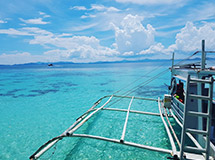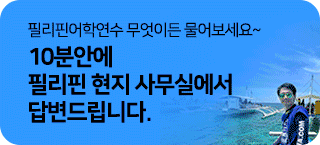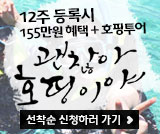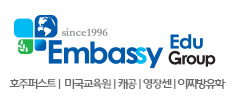
-
МјРЇСІИёСЖШИМі
-
 Malacañang Palace-Official Residence of the Pres
Malacañang Palace-Official Residence of the Pres 139,214
139,214 -
 Amana Water Park
Amana Water Park 115,869
115,869 -
 IFUGAO TRIBE
IFUGAO TRIBE 109,879
109,879 -
 Santacruzan-The Queen of all Filipino Festivals109,701
Santacruzan-The Queen of all Filipino Festivals109,701 -
 Water Refilling Station: an alternative source of drink107,980
Water Refilling Station: an alternative source of drink107,980 -
 LAMBANOG-THE POOR MAN\'S DRINK105,104
LAMBANOG-THE POOR MAN\'S DRINK105,104 -
 Christmas Parol [lantern in English]104,784
Christmas Parol [lantern in English]104,784 -
 HANGING RICE97,510
HANGING RICE97,510 -
 Taoist Temple94,360
Taoist Temple94,360 -
 Corn Fields in the Philippines90,874
Corn Fields in the Philippines90,874
Water Refilling Station
(an alternative source of drinking water supply in the Philippines)
The demand at the water refilling stations – water stores that sell purified water
– is now increasing. The quality of purified water conforms with the national
standards for drinking water and is even better than the quality of water produced by traditional water supply systems in terms of removed impurities.
Over the years, as the demand for cleaner water becomes higher, the price of
household water purifiers and bottled water has become prohibitive. Water
refilling stations managed by private entrepreneurs offer a cheaper and more
convenient solution to the publicЁЏs drinking water needs than bottled water or the use of household filters.
At present, about 3,000 water refilling stations have proliferated nationwide. They sell purified water of comparable quality with bottled water at a lower price. For
example, the current price per gallon of refilled purified water in Metro Manila
ranges from P 50 to P 120 per 5-gallon container or about P 2.50 to P 6.00 per
liter while the bottled water is sold at P 12.00 to P 25.00 per liter. Household
filters, on the other hand, cost P 5,000 to P 25,000 per unit ( 1 US $ = P 56 in 2004).
In Metro Manila, most of the water refilling stations are connected to the pipes of two concessionaires: Maynilad Water Company or Manila Water Company for their source of raw water while in other areas they opt to use private deep wells. The ЁАpotable waterЁБ supplied by the providers is then further purified by utilizing a
combination of water treatment equipment, such as sediment filters, carbon filters, water softeners, reverse osmosis membranes, ultra-violet lamps, and ozone
generators. Typical water refilling stations can produce 3,000 to 12,000 litres of
purified water per day. In previous years, most of the people were bringing a
container to a water refilling station to buy purified water.
a diagram of water ionization process if water is safe or not
Nowadays, because of convenience on the part of the consumers, purified water in 5-gallon (22.7 litres) containers are delivered by the station directly to the
peopleЁЏs home. Aqua Sure, a water refilling station in Metro Manila, can deliver 5,500 gallons (25,000 litres) a day to its 8,000 household clients.
a picture of a water refilling station in philippines
Features of a water refilling station:
Structurally, water refilling station can be operated with a minimum area of at least 20-25 square metres. It comprises the following sections: refilling and selling room, enclosed water purification room, container washing and sanitizing room, storage room for empty and refilled containers, source
water storage facility, toilet and an office. To operate the water store,
about five employees are needed.
- 1 – Manager – Overseas store operations at least 4 hours a day
- 1 – Accountant/Bookkeepper – Makes financial statement of business
operations
- 1 – Administrative assistant – Logs and handles cash sales and
purchases
- 1 – Front Liner – Accepts and refills containers of customers
- 1 – Technical Asst. – Maintains and runs the machine
- 1 – Driver/Delivery Man – Transport refilled containers to customerЁЏs
home.
proper attire in a water refilling station
refilled water
The main processes in a water refilling station is dictated by raw water
quality. The typical steps are filtration (several stages), softening, and
disinfection. The machines that could be installed for such processes are the following:
>Multi-media sediment filter – removes sediments such as rust, sand and
particles that are invisible to the naked eye; employs a total of 5 filters.
>Ion exchanger – replaces hard minerals with soft minerals.
>Activated carbon filter – removes all organic chemicals, herbicide,
pesticide, offensive odor and bad taste.
>Reverse osmosis membrane – the heart of the system and the most expensive unit; removes inorganic minerals, bacteria and viruses while retaining its oxygen content. Since the filter size is very small at less than 0.05 micrometre, the product water could have a total dissolved solids (TDS) of less than 10 ppm. The filtration process rejects about 50 percent of raw water volume.
>Post-carbon filter – improves the taste of water.
>Ultraviolet lamp – ensures that the water is free from disease-causing micro-
organisms.
>Ozone generator – inhibits the growth of bacteria in the product tank and
prolongs the shelf life of water.
machines use in a safe water refilling station
The efficiency of water purification system in removing impurities is high.
The 10 water quality parameters measured by Magtibay (2001) showed
an average of 80 percent efficiency.Institutions and policiesThe agencies
directly involved in the establishment operation of water refilling stations
are as follows:
>The Department of Health (DOH). DOH is the main agency responsible
for protecting the health of the people. The Sanitation Code of the
Philippines mandates DOH in protecting drinking water quality.
Consequently, DOH issues implementing rules and regulations prescribing
sanitary standards for water supply systems, including water refilling
stations.
>The Center for Health Development (CHD) is the regional branch of DOH. Its main function is to provide technical assistance to local government
units and to monitor DOH programme implementation which includes water quality and sanitation standards. For water refilling stations, CHD is
mandated to issue initial and operational permits.
>The Local Government Units (LGUs) are mandated by Presidential Decree (PD 856) to issue sanitary permit, sanitary clearance, health certificates,
certificate of potability, drinking water site clearance and closure order
(if necessary) and to conduct sanitary inspection of WRS.
>The Water Quality Association of the Philippines Inc. (WQAP) is an
organization of private firms who are engaged in the manufacture, sale,
and distribution of water refilling station equipment and supplies, as well as water treatment and purification equipment and technology for household, institutional, commercial and industrial applications. About 85 percent of its 250 members operates water refilling stations.
>Association of Water Refilling Entrepreneurs (AWARE) concentrates on
resolving business management issues of its members.
sanitation in a water refilling station
Presidential Decree No. 856 (PD 856) or the Sanitation Code of the
Philippines is the main law requiring all establishments to comply with
existing sanitary standards to protect public health. Guidelines for
operating a water refilling station are indicated in the Supplemental
Implementing Rules and Regulations on Water Supply of PD 856 issued in
1999.
Water quality monitoring:
Source water and product water are subject to regular monitoring by the
local health office. The national standards for drinking water contains 54
parameters that must be complied with. Only DOH-accredited laboratories are allowed to conduct water testing and analysis. The frequency of
monitoring is as follows:
- Bacteriological quality – at least monthly
- Physical quality – at least every six (6) months
- Chemical quality – at least every six (6) months
- Biological quality – at least once a year
- Monitoring of radioactive contaminants shall be done only if there is
- significant input of radiation from the surrounding environment.
Conclusions:
Water refilling stations can be a good source of safe drinking water in the Philippines. Purified water can meet the aesthetic standards easily
detectable by the people in terms of taste, odor and color. The efficient water purification processes can make the quality of water superior to the traditional water systems. However, the risk of contamination is possible if the handling practices are not closely monitored.
refilling machine

- ЁЄ
- ЁЄ
- ЁЄSalapan Festival
- ЁЄEmpanada Festival (Batac City)
- ЁЄPADUL-ONG FESTIVAL
- ЁЄKaumahan Festival in Barili
- ЁЄKAGASANGAN FESTIVAL
- ЁЄLalin Festival in Asturias
- ЁЄTinabuay Festival
- ЁЄGayon Bicol Festival
- ЁЄPINYASAN FESTIVAL in CAMARINES
- ЁЄMAGAYON FESTIVAL
- ЁЄBANAUAN FESTIVAL (BARANGAY.GUA
- ЁЄThe Tuna Festival in Gensan
- ЁЄPINTOS FESTIVAL BOGO CITY, CEB



- ЁЄ
- ЁЄ
- ЁЄ
- ЁЄCEBU WESTOWN LAGOON
- ЁЄGREEN LAGOON, COMPOSTELA
- ЁЄCALLAO CAVE
- ЁЄMOUNT PINATUBO IN PHILIPPINES
- ЁЄBATAN ISLAND in Batanes.
- ЁЄCALAGUAS ISLAND, CAMARINES NOR
- ЁЄAGHO ISLAND
- ЁЄCARAMOAN ISLAND IN CAMARINES S
- ЁЄSAMBAWAN ISLAND
- ЁЄPLACES TO VISIT IN LANAO DEL N
- ЁЄPLACES TO VISIT IN ZAMBOANGA C
- ЁЄPlaces to visit in Rizal Provi












 ЧЪРкДхФФ ОпАЃЛѓДу ПРЧТ
ЧЪРкДхФФ ОпАЃЛѓДу ПРЧТ 12ГтПЌМг МвКёРкИИСЗ 1РЇ
12ГтПЌМг МвКёРкИИСЗ 1РЇ
 ГЛАд ИТДТ ОюЧаПј УЃБт
ГЛАд ИТДТ ОюЧаПј УЃБт
 ИЎОѓ ЧаБГ ЙцЙЎБт
ИЎОѓ ЧаБГ ЙцЙЎБт
 СжИЛПЁ ГЛАЁ ОЕ КёПыРК?
СжИЛПЁ ГЛАЁ ОЕ КёПыРК? УжАэАЁМККё РЬКЅЦЎ СёБтБт
УжАэАЁМККё РЬКЅЦЎ СёБтБт
 ЧіСіПЁМЕЕ ЧЪРкДхФФ!
ЧіСіПЁМЕЕ ЧЪРкДхФФ! ЧіСіПЁМ АЁДЩЧб
ЧіСіПЁМ АЁДЩЧб









 ЧЪРк ЦЏБо Ч§ХУ! ФСНУОюСі МКёНК
ЧЪРк ЦЏБо Ч§ХУ! ФСНУОюСі МКёНК


































